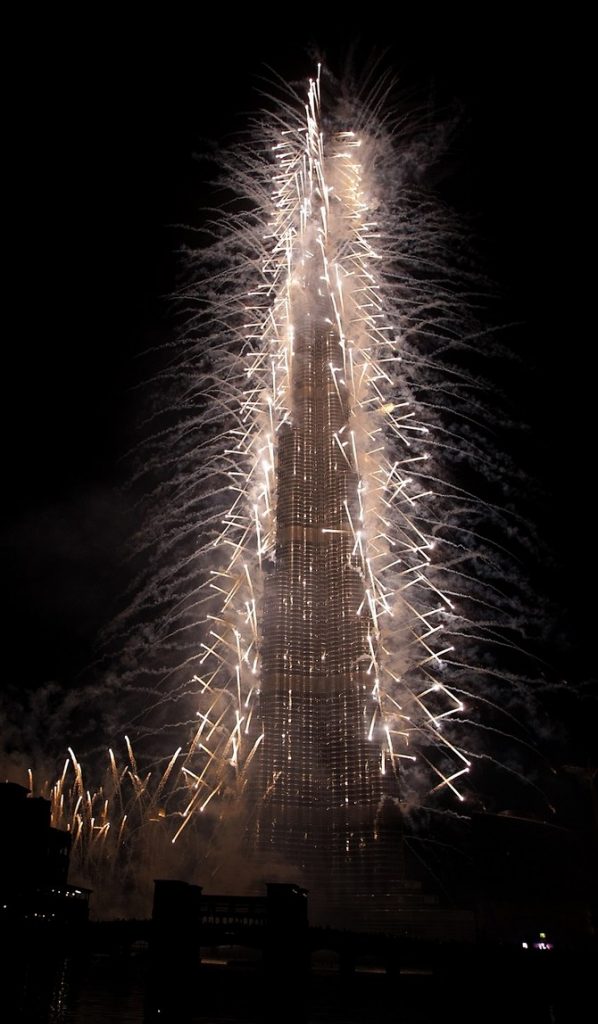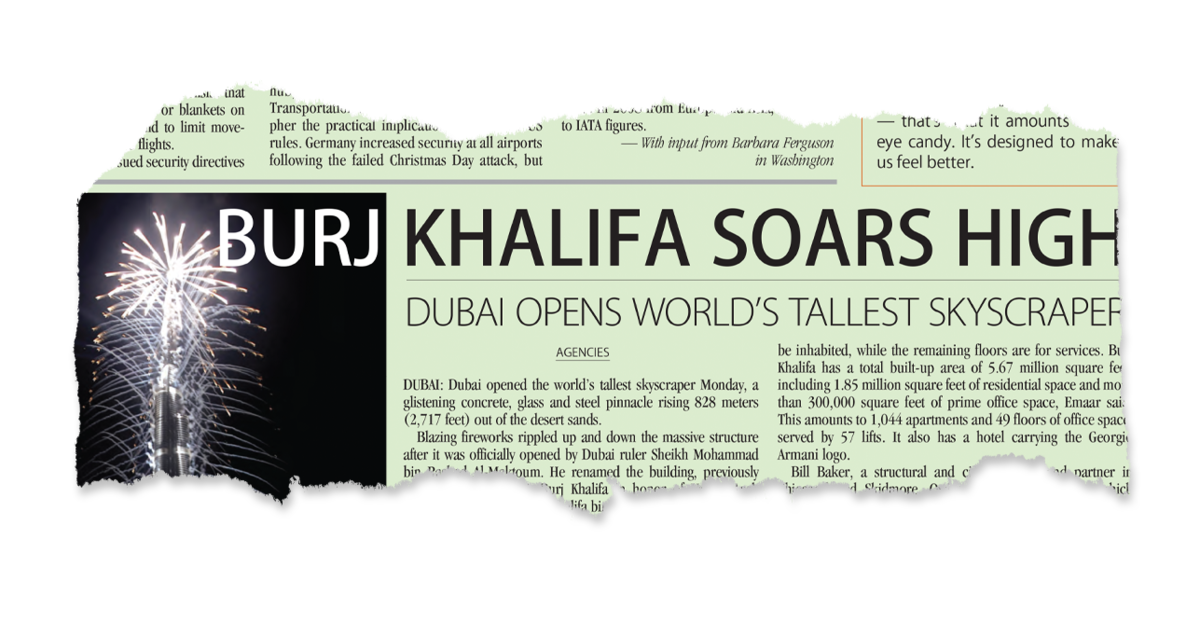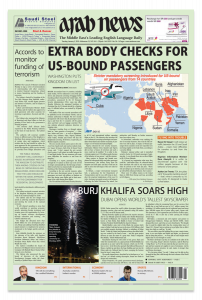- ARAB NEWS
- 30 Jun 2025

Peter Harrison
SUMMARY:
On Jan. 4, 2010, Dubai opened the world’s tallest tower, the Burj Khalifa, standing at an impressive 828 meters tall. It had been six years in the making, with the excavation works taking place in January 2004 and the external cladding of the structure completed five years later in September 2009.
Its opening ceremony was televised around the globe at a time when the world was only just beginning to show signs of recovery after the worst recession in our lifetime, making a defiant stand for prosperity. Since the Burj Khalifa was opened, there has been talk of other, even taller towers, but currently that is all it has been — talk.
DUBAI: The day the Burj Khalifa was opened, it stood as a sign of prosperity at a time when the world was on its knees, crippled by the worst recession of our lifetime. Dubai had already rung in the new year, waving a relieved farewell to a turbulent 2009, with this vast 828-meter-tall tower acting as the center of the world’s highest firework display — its roots held solid in the foundations of Dubai Mall, one of the world’s biggest.
Four days later, it was the turn of Dubai’s ruler Sheikh Mohammed bin Rashid Al-Maktoum — on the anniversary of his accession — and the official opening of the world’s tallest tower, the Burj Dubai, as it was then known. For those of us lucky enough to cover the story on Jan. 4, 2010, there was a sneak peak of the observation deck and a chance to take in the breathtaking views — allowing for the mist and haze.
We met with executives of Emaar, the developers behind the tower, who spoke proudly of the achievements as the media formed a scrum around them. There was no mention of the name change — they did not even reveal the tower’s closely guarded height. It was only during the evening’s spectacular firework display that the latter two “secrets” were revealed.
Sheikh Mohammed had ordered its construction years before, when the world’s economy was much healthier. It was clear before the recession that Dubai needed to diversify its economy — move away from oil reliance — and the service and tourism industries seemed to be the obvious way forward.
The sheikh wanted an icon for Dubai that would be recognized around the world. And he was not satisfied with just another tower — the world’s tallest was not good enough. This one had to smash all existing records — Sheikh Mohammed was raising the bar. “It started with a dream, and then a journey of seeing that dream every day getting built higher and higher,” Ahmad Al-Falasi, executive director of Emaar, said of the project.

“At a time of profound pessimism and sky-high debt around the world, the sky-high Burj Khalifa … is a mighty finger pointing upward toward better and altogether more prosperous times.”
Arab News editorial, Jan. 5, 2010
The previous record-holder at 508 meters tall, the Taipei 101, is now the 11th-tallest building in the world after six years (2004-2010) at the top. The Burj Khalifa boasts the highest observation deck, there are views of the world’s largest choreographed fountain, and one side of the tower hosts the world’s biggest lighting display — inside are the highest apartments, nightclub and restaurants.
When the tower was completed in 2010, the opening was overshadowed by a financial crisis that had taken its toll everywhere, and Dubai was no different. The Arab News editorial the day after the official opening event, while acknowledging the architectural achievements, did also remind readers of the hardships experienced everywhere — not least in Dubai.
“Burj Khalifa is a reminder of the vision which has driven the quite remarkable real estate development in the emirate (of Dubai),” the editorial explained on Jan. 5, 2010. But the column went on to add: “So at a time of profound pessimism and sky-high debt around the world, the sky-high Burj Khalifa, as it is called now, is a mighty finger pointing upward toward better and altogether more prosperous times.”
Creating the world’s tallest tower requires a lot of attention to detail — details that would ultimately save lives. The building is a series of interwoven towers that stop at different levels — no single surface runs all the way to the top. This shape prevents the strong winds from causing vortexes that would cause the building to sway too much.

The external glass is designed to reflect more than 70 percent of the sun’s heat; without it, temperatures would be deadly in the summer. A “faraday cage” style structure was created on the exterior of the tower to act as a massive lightning conductor to prevent lightning strikes from hitting its interior. There are two vast chiller systems outside the tower that pump chilled water into the Burj’s air-conditioning system.
The tower’s design includes an escape network with a lift that travels 138 floors in less than a minute (the farthest any one lift travels in the world), in a shaft encased in fire-resistant concrete — it is the Burj Khalifa lifeboat. There is also a series of safe refuges at intervals down the building that are also encased in fire-resistant concrete and have a supply of fresh air that is delivered at high enough pressure to deflect smoke, should there be a fire.
The design was so advanced that the architects and engineers even had to consider how to deal with the messy business of sewage. A straight drop from the top would not work — that would mean a flush of the toilet at the top would reach speeds of up to 160 km per hour by the bottom.
As such, sewage is sent down a few floors at a time through a series of sound-proofed pipes and pumps, while super-pressured pumps send fresh water to a series of water tanks up in the building.
The Burj was a first in many respects, and it will always mark the moment that architecture changed forever, but it will likely lose its crown when Saudi Arabia completes the 1,000-meter-tall Kingdom Tower.